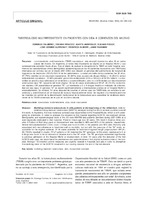Please use this identifier to cite or link to this item:
http://sgc.anlis.gob.ar/handle/123456789/150| DC Field | Value | Language |
|---|---|---|
| dc.contributor.author | Palmero, Domingo | es |
| dc.contributor.author | Ritacco, Viviana | es |
| dc.contributor.author | Ambroggi, Marta | es |
| dc.contributor.author | Poggi, Susana | es |
| dc.contributor.author | Güemes Gurtubay, Jose L. | es |
| dc.contributor.author | Alberti, Federico | es |
| dc.contributor.author | Waisman, Jaime | es |
| dc.date.accessioned | 2012-10-04T14:23:00Z | - |
| dc.date.available | 2012-10-04T14:23:00Z | - |
| dc.date.issued | 2006 | - |
| dc.identifier.issn | 0025-7680 | - |
| dc.identifier.uri | http://sgc.anlis.gob.ar/handle/123456789/150 | - |
| dc.identifier.uri | http://www.scielo.org.ar/pdf/medba/v66n5/v66n5a03.pdf | - |
| dc.description | Fil: Palmero, Domingo. Hospital F.J. Muñiz. Sala 19; Argentina. | es |
| dc.description | Fil: Ritacco, Viviana. ANLIS Dr.C.G.Malbrán. Instituto Nacional de Enfermedades Infecciosas; Argentina. | es |
| dc.description | Fil: Ambroggi, Marta. Hospital de Enfermedades Infecciosas Francisco Javier Muñiz. Laboratorio de Bacteriología de la Tuberculosis A. Cetrángolo; Argentina. | es |
| dc.description | Fil: Poggi, Susana. Hospital de Enfermedades Infecciosas Francisco Javier Muñiz. Laboratorio de Bacteriología de la Tuberculosis A. Cetrángolo; Argentina. | es |
| dc.description | Fil: Güemes Gurtubay, Jose L. Hospital F.J. Muñiz. Sala 19; Argentina. | es |
| dc.description | Fil: Alberti, Federico. Hospital F.J. Muñiz. Sala 19; Argentina. | es |
| dc.description | Fil: Waisman, Jaime. Sala 19; Argentina. | es |
| dc.description.abstract | La tuberculosis multirresistente (TBMR) asociada al sida emergió durante los años 90 en varios países del mundo. En Argentina, el brote más importante se originó en el Hospital Muñiz y sus consecuencias persisten hasta ahora. Con el objeto de evaluar la situación de la TBMR en este hospital, analizamos las características clínico-demográfico-epidemiológicas de los 53 pacientes masculinos con TBMR/sida internados por primera vez en el trienio 2001-2003 con relación al genotipo del polimorfismo de longitud de fragmentos de restricción (RFLP) IS6110 de los aislamientos. La edad promedio de los pacientes fue 32 años, 37 (70%) residían en el conurbano bonaerense, 36 (68%) eran usuarios de drogas ilícitas y 14 (26.4%) tenían antecedentes carcelarios. El 88% presentó grave inmunodepresión (CD4+<100/µl) y el 58.5% falleció. La mortalidad se asoció a baja adherencia al tratamiento y a comorbilidades, pero no a enfermedad por Mycobacterium tuberculosis cepa “M”, causante del brote original. De los 40 casos analizados por RFLP, 29 (72.5%) conformaron clusters y 24 presentaban el genotipo “M”. La resistencia a 5 o 6 drogas resultó un indicador de enfermedad por esa cepa. El genotipo “M” se asoció significativamente a internaciones previas en el Hospital Muñiz o encarcelamiento. En síntesis, 14 años después de ocurrido el primer caso de TBMR/sida, se constata la persistencia y predominancia en el hospital de la cepa responsable del brote. Se requiere una intensificación de las medidas de control de la diseminación institucional de la tuberculosis para consolidar la tendencia decreciente de la TBMR observada en el país en la última década. Aids-related multidrug-resistant tuberculosis (MDRTB) emerged during the 90s in several countries around the world. In Argentina, the most notorious outbreak was documented in the Hospital Muñiz, which is still undergoing its aftermaths. In order to evaluate the situation in this hospital regarding MDRTB, we analysed clinical, demographic and epidemiological traits of the 53 male MDRTB-aids patients admitted during 2001-2003 at a ward especially dedicated to their isolation. Patients’ mean age was 32 years, 70% lived in Buenos Aires suburbs. A history of illicit drug users or imprisonment was recorded in 68% and 26% of the patients, respectively. Severe immunodepression (CD4+ count <100/µl) was found in 88% of the patients and 58% died. Mortality was associated with non-adherence to treatment and co-morbidity, but not with the genotype of the “M” strain, responsible for the original outbreak. Of 40 cases available for restriction fragment length polymorphism (RFLP), 29 (72.5%) resulted in cluster. RFLP patterns of 24 matched the “M” genotype. In this study, resistance to 5 or 6 drugs was found to be an indicator of disease due to the “M” strain. The “M” genotype associated significantly to previous admission at the Hospital Muñiz or imprisonment. In brief, 14 years after the detection of the first MDRTB-aids case, we report here the persistence and predominance of the original outbreak strain at the hospital. Stronger TB infection control measures are urgently needed in hospitals and jails in order to strengthen the declining trend of the MDRTB observed in our country towards the end of the last decade. | es |
| dc.format | application/pdf | ES |
| dc.language.iso | es | es |
| dc.relation.ispartof | Medicina (Buenos Aires) | es |
| dc.rights | info:eu-repo/semantics/openAccess | en_US |
| dc.rights | Creative Commons Attribution 4.0 International License | - |
| dc.rights.uri | http://creativecommons.org/licenses/by/4.0/ | - |
| dc.source | Medicina (Buenos Aires) 2006; 66(5): 399–404. | en_US |
| dc.subject | Tuberculosis | es |
| dc.subject | Síndrome de Inmunodeficiencia Adquirida | es |
| dc.title | Tuberculosis multirresistente en pacientes con SIDA a comienzos del milenio | es |
| dc.title.alternative | Muitidrug-resistant tuberculosis in aids patients at the beginning of the millennium | es |
| dc.type | Artículo | es |
| anlis.essnrd | 1 | es |
| item.languageiso639-1 | es | - |
| item.openairecristype | http://purl.org/coar/resource_type/c_18cf | - |
| item.cerifentitytype | Publications | - |
| item.grantfulltext | open | - |
| item.fulltext | With Fulltext | - |
| item.openairetype | Artículo | - |
| Appears in Collections: | snrd Publicaciones INEI | |
Files in This Item:
| File | Description | Size | Format | |
|---|---|---|---|---|
| Medicina(Buenos Aires),2006,66(5),399–404.pdf | Artículos en español | 61.05 kB | Adobe PDF |  View/Open |
Page view(s)
302
checked on Dec 15, 2025
Download(s)
26
checked on Dec 15, 2025
Google ScholarTM
Check
This item is licensed under a Creative Commons License


